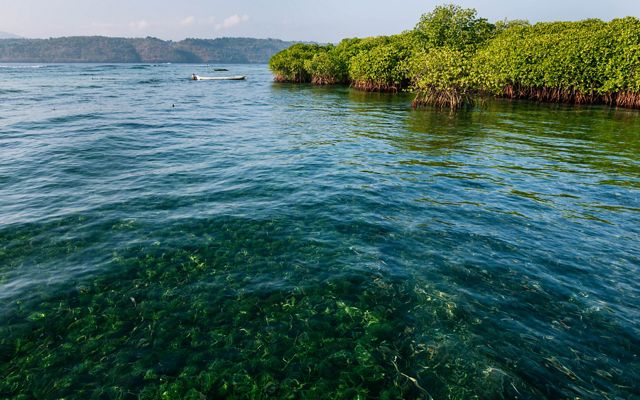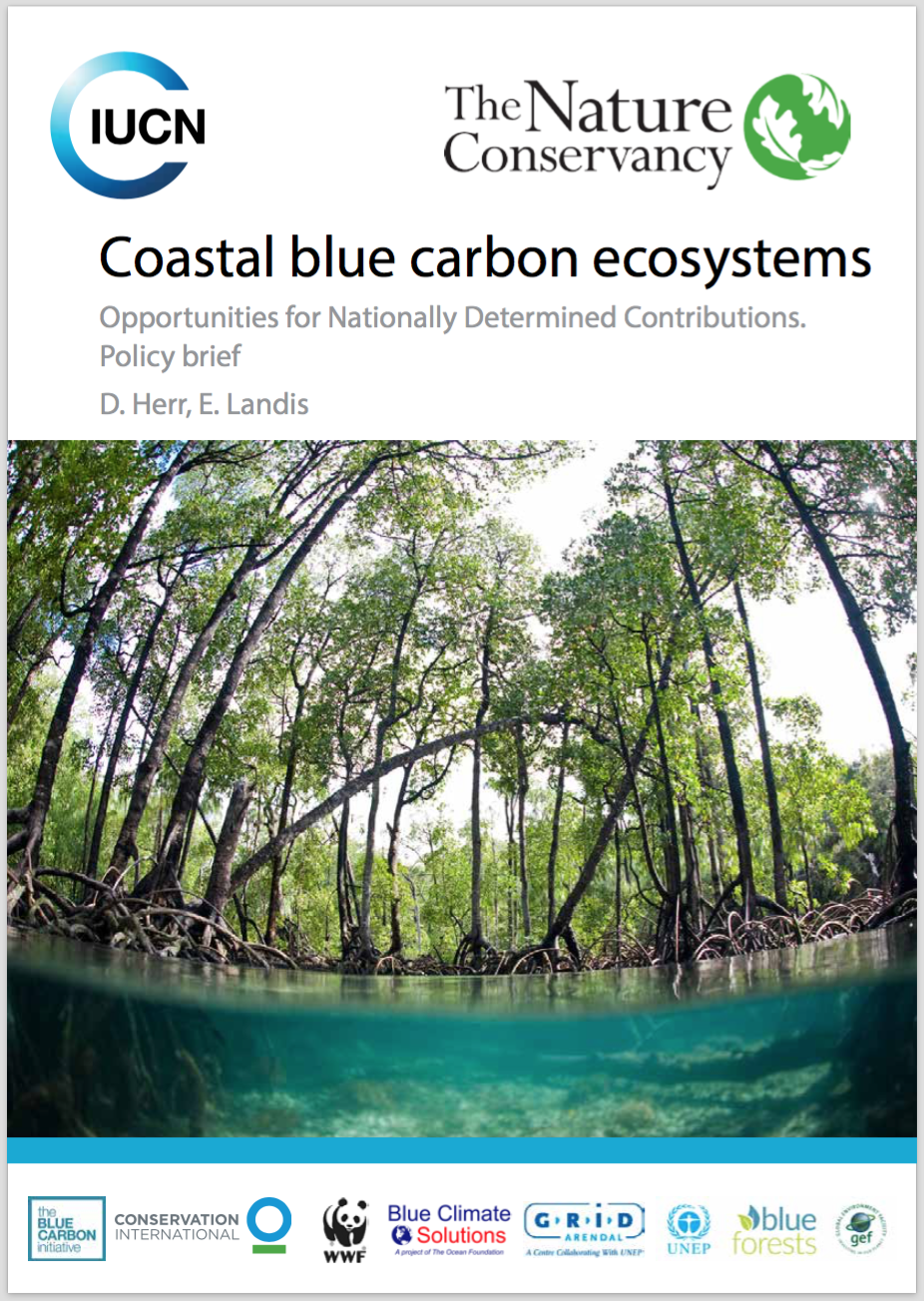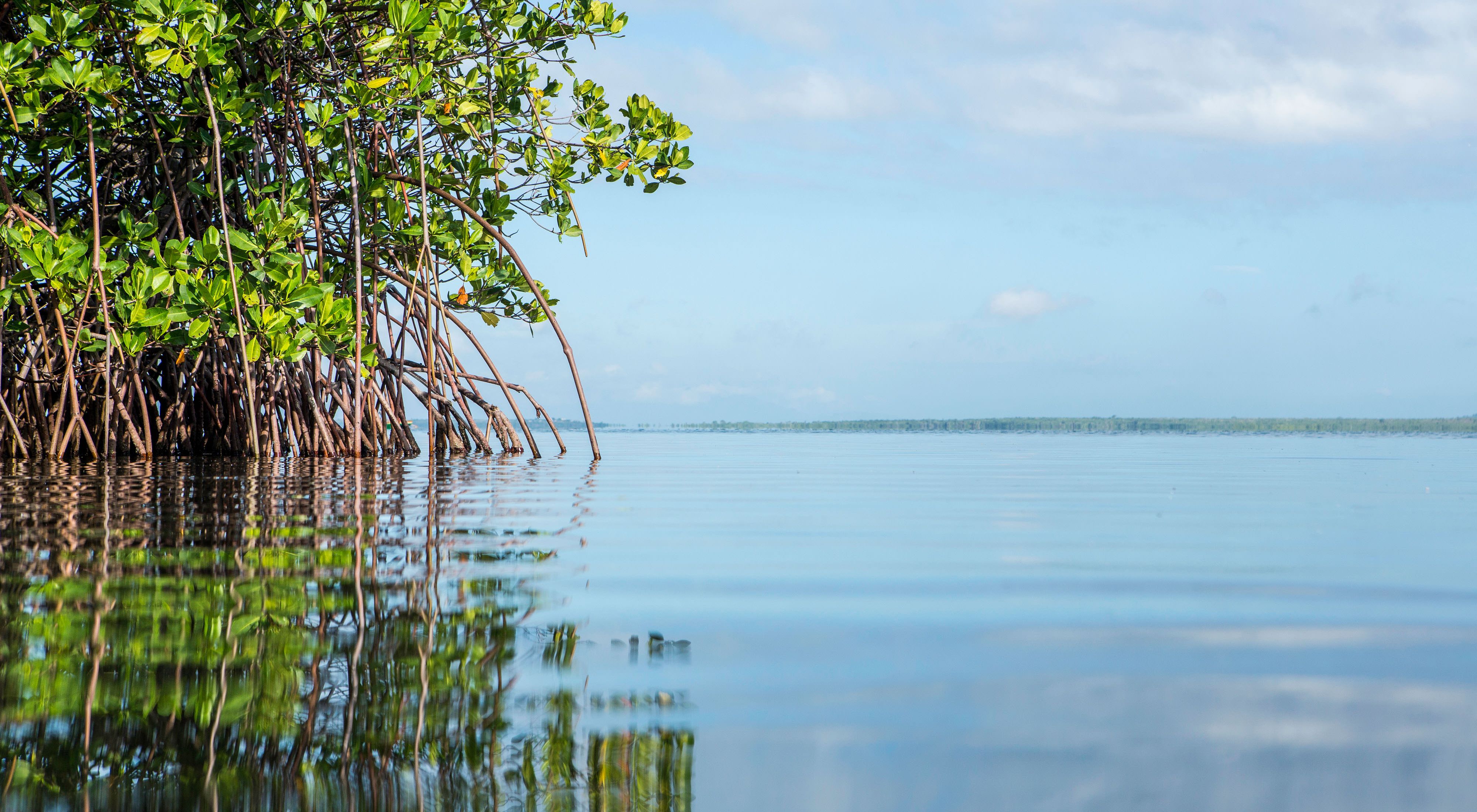Investing in Blue Carbon for a Resilient Future
How coastal wetlands can protect communities and store a level of carbon equivalent to stopping the burning of over 2 billion barrels of oil
The impacts of climate change are accelerating around the world, but perhaps nowhere faster than for islands and coastal areas. In fact, a study by the United States Department of Defense suggests that more than a thousand low-lying tropical islands risk becoming “uninhabitable” by the middle of the century as rising seas bring battering waves, aquifers inundated with salt water and, eventually, full submergence.
For these communities to survive, we must find ways to reduce the emissions driving climate change and help them adapt to the impacts they already experience. For coastal communities, an overlooked set of solutions—protecting coastal wetlands and the blue carbon they store—could help with both goals.
What is Blue Carbon?
Despite international progress made since the 2015 Paris Climate Agreement and accelerating renewable energy investments in the years since, technological solutions alone probably won’t keep our climate in safe boundaries. We must also invest in natural climate solutions—practices that maximize the carbon storage potential of our natural ecosystems.
When considering natural climate solutions, forest carbon—avoided deforestation and reduced-impact logging, for example—attracts most of the limited attention. But coastal wetlands—tidal marshes, seagrass meadows and mangrove forests—sequester billions of tons of carbon from our atmosphere at concentrations up to five times greater than terrestrial forests. The carbon sequestered and stored in these coastal wetlands is called “blue carbon,” and it should also be included in the conversation.
Wetlands draw in carbon and transfer much of it into the rich soils held by their roots. They are also a continuous carbon sink: layers of soil accumulate, enabling new plants to grow above. If the wetlands are not stressed by human activity, this upward growth can outpace moderate sea level rise. This stored carbon can remain in the soil for thousands of years, making coastal wetlands one of our longest-term climate mitigation solutions.

Dual Benefits: Prevention and Protection
Coastal wetlands also offer another benefit that sets them apart from other climate mitigation solutions—they protect coastlines by absorbing incoming wave energy and providing storm protection, often at lower costs than built, or grey, infrastructure such as seawalls and levees. Indeed, The Nature Conservancy (TNC)’s own research illustrates how nature-based coastal resilience can save communities hundreds of millions of dollars when severe weather strikes, reducing flood damage by up to 29 percent.
Today, 40 percent of the world’s population lives within 100 kilometers of the coast, making sea-level rise and flooding from more frequent, intense storms significant climate-related risks. As our climate changes, the conservation and restoration of coastal wetlands can help protect millions of people, while also providing additional benefits such as healthier fisheries, water purification and improved local livelihoods.
Unfortunately, wetlands are being lost at an alarming rate —more than almost any other habitat—due to human activity. Experts estimate that the amount of carbon dioxide (CO2) released annually from degraded wetlands is roughly 450 million tons (Mt), which is more than Australia’s 2016 emissions. It is critical that we protect and restore the world’s blue carbon systems. Not only will wetlands deliver ongoing carbon sequestration, they will also increase the resilience of coastal communities and economies.
The Blue Carbon Opportunity
If coastal wetlands were restored to their 1990 extent, they would have the potential to increase annual carbon sequestration 274 Mt per year, offsetting the burning of more than 2 billion barrels of oil. Add to this the tens of millions of tons of carbon emissions that could be averted by avoiding further wetlands loss, and the global impact of coastal wetlands conservation and restoration is undeniable.
In contrast to forest carbon, which has well-developed financial mechanisms and policy frameworks, blue carbon has attracted limited attention from policy makers. But in recent years, it has come into focus at international forums including the 2013 IPCC Wetlands Supplement, the Blue Carbon Initiative and the International Partnership for Blue Carbon.
Quote: EPA
2,110,125,875 barrels of oil burned can be offset by restoring coastal wetlands.

The United Nations Framework Convention on Climate Change (UNFCCC)—among other policy forums—will be critical in changing the way we view and address the role of coastal wetlands for climate change. With the historic Paris Agreement, 195 countries pledged to curb climate change through Nationally Determined Contributions (NDCs). Some of these pledges recognize the value of coastal ecosystems for climate change mitigation and adaptation but a significant opportunity remains for better inclusion of wetland as a natural climate solution, particularly in coastal and Small Island Developing States (SIDS).
Private and public carbon markets are another mechanism by which carbon emissions can contribute to NDCs. As the rules for the Paris Agreement are finalized and implemented over coming years, blue carbon will become even more important and more valuable in a market context. Natural climate solutions, including blue carbon, can deliver carbon storage and sequestration benefits for the future, while also helping communities, ecosystems and economies be more resilient to unavoidable climate impacts today.
Healthy Coasts, Resilient Future
In the field of carbon sequestration, TNC has been an innovator in terrestrial carbon markets and an active and well-respected accredited observer to the UNFCCC negotiations. With the adoption of the Paris Agreement and a new International Panel on Climate Change Special Report on Climate Change and Oceans being developed this year, we have a unique opportunity to enhance the perception and solidify the science of blue carbon as a climate solution for mitigation and adaptation.

Our expertise also extends to a much broader array of management interventions and market mechanisms. In recent years, TNC’s partnership with companies and insurance industry leaders has advanced our understanding of when, where and how coastal ecosystems can reduce climate risk, and under which conditions they are the most cost-efficient option.
But the best case for blue carbon can be seen in the projects on the ground. TNC is working to conserve and restore coastal wetlands in the United States, Mexico, Papua New Guinea, Indonesia, and beyond. For example, in Indonesia, which has the largest distribution of mangroves in the world, we are working to expand the forest carbon market to include mangroves, while also utilizing mangroves to enhance sustainable livelihoods through fishery production. We are also helping build local capacity to identify and implement viable management options for increasing mangrove resilience and carbon accounting in Micronesia.
For coastal communities and islands facing devastating storms and encroaching seas, the cost of inaction is high and the timeline for reducing risk short. For these lands, the point of no return could be as early as 2030. But collaborating on innovative ways to conserve blue carbon ecosystems presents an unprecedented global opportunity: to simultaneously build more resilient communities, economies and coastlines in a climate changing world.
Download
-

Coastal Blue Carbon Ecosystems
Policy Brief
Coastal and island countries have an opportunity to take their blue carbon ecosystems into account when considering their national level climate actions.
DOWNLOAD
